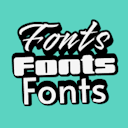Product
Templates
Resources
Company
Home
Blog
Design
Classic art: How historical styles are shaping modern trends
Classic art: How historical styles are shaping modern trends

Classic art isn’t just hanging in museums anymore—it’s everywhere. From viral memes to period dramas and even streetwear, centuries-old paintings are getting a whole new life in today’s world.
In this article, we’re diving into the classic art styles that are making a surprising comeback in today’s world—exploring how they’re being reimagined in fashion, design, entertainment, and digital culture. We’ll break down why these historical art movements are experiencing a revival, where you’ll spot them, and what’s driving their modern appeal.
What is classical art?
Let’s get technical for a moment. The term "classical art" (also known as “classicism”) refers to art and architecture from ancient Greece and Rome, and the art styles that came after that emulate those periods. The key traits of classical art are emphasis on harmony, balance, proportion, and rationality. You’ll find classical art also often puts emphasis on the human figure and depicts relationships between people and/or the gods.
Classical art laid the groundwork for movements like the Renaissance and Neo-classicism, both branches of classical tradition.
What is classic art?
"Classic art" is a broad reference to art created before the modern art movements of the 20th century. Often confused with "classical art," it's important to note that these terms are not synonymous. Classic art encompasses pre-modern styles, such as Baroque, Rococo, and Romanticism as well as those classical art styles mentioned above, and more.
Classic art reflects traditional aesthetics and historical styles.
While each classic art style has its own distinct features, they’re all loved today for their historic charm and dramatic flare.
Classical art prioritizes realism, which is why more ornate styles like Rococo, Romanticism, and Baroque are not categorized as classical art.
Classic art styles
Let’s explore the iconic classic art styles that are being reused and modernized today:
Renaissance: Spanning the 14th to 17th centuries, this period marked a revival of classical themes and humanist ideals. Artists emphasized realism, perspective, and a return to ancient Greek and Roman techniques, showcasing the beauty of the human form and nature.

"Mona Lisa" by Leonardo da Vinci
Baroque: Popular from the late 16th to mid-18th century, Baroque art is known for its dramatic use of light, bold colors, and intense emotion. It often depicted religious themes, grandiose subjects, and moments of action, creating a sense of movement and grandeur.

"Banquet Still Life" by Abraham van Beyeren
Rococo: A more playful and ornate style that emerged in the early 18th century, Rococo was characterized by lightness, elegance, and intricate details. It featured pastel colors, delicate curves, and often portrayed themes of love, beauty, and frivolity, especially in aristocratic settings.

"The Apotheosis of Hercules" by François Lemoyne
Neo-classicism: Emerging in the late 18th century, Neo-classicism revived the classical ideals of simplicity, order, and proportion. It drew inspiration from ancient Greece and Rome, focusing on harmony, rationality, and moral themes, often seen in formal portraits.

"Maria Mathilda Bingham with Two of her Children" by Sir Thomas Lawrence
Romanticism: This 19th-century movement emphasized emotion, inspiration, and awe. Artists sought to express personal feelings and dramatic, often nature-inspired scenes, focusing on intense colors and sweeping landscapes.

"The Phantom Horseman" by Sir John Gilbe
How classic art is being used today
Fast forward to today, and these classic art styles are out of museums and all around us. From appearing in popular shows to inspiring memes and modern designs, classic-style artwork is proving to be incredibly versatile. Let's explore where classic art is being unconventionally used today and how it's being modernized.
Classical art in shows and films
Interestingly, searches for 'historical art' spiked in 2020, right when period dramas jumped in popularity. The biggest influence? Likely period shows such as Bridgerton, with all three seasons securing a spot in Netflix’s all-time global top 10.
The show's historical setting is artfully contrasted with a modern twist of inclusivity and costumes that have an extra extravagant flare that feels fresh rather than old-fashioned. This modern interpretation of classical themes creates a bridge between past and present, allowing contemporary audiences to connect with historical styles in a new way.
Other standout period piece releases were Emma (2020), The Great (2020), and Enola Holmes (2020). Known for their lavish Regency-era aesthetics, these shows and films likely aided in sparking interest in historical art that bled into the design world.
Fast forward a few years and we see the hit show Severance incorporate artwork that mirrors the classic art styles we explored above.
Paintings play a key role throughout the series, packed with symbolism that ties into the show's deeper messages. But it’s not just the artwork—the entire visual style of Severance pulls from clean, minimalist design that’s practically Neoclassical with a focus on symmetry and balance that heightens the psychological tension. If you’ve seen Severance or even images of it, you’ll have noticed the show’s visual language is a central component that adds deeper meaning to the story.

Classic-style artwork in Severance
Classical art in modern design
You may have noticed historical images and paintings have appeared on posters and streetwear lately. Designers are blending classical art with modern typography and design elements.
In the video below, Drew shares his take on the neo-classical graphic design trend and walks us through how to create classic art-inspired designs. Plus, he shares expert design tips and insights on how to create AI-generated images that mirror the style of classic paintings.
Below are just a few examples of templates in Kittl that incorporate classic art into modern designs.
You'll see these designs lean into a well-structured use of typography and composition. The classical artwork is blended with modern typefaces in a way that feels deliberate and minimalist, yet bold. The designs like "Discipline" and "History" keep a sense of formality, but incorporate elements such as distorted letters or minimal graphic accents for a subtle contemporary twist.
This is an excellent example of how you can play with the balance between old and new, adding classic artwork to modern-style designs.
Another way to approach blending classic art with modern art is with the approach below. These designs take a much more bold approach adding neon colors, spray-paint effects, and graffiti-style typography. They embrace a more chaotic, street-art-inspired aesthetic, adding a playful and rebellious twist to the classical imagery.
There’s more emphasis on the contrast between old and new, making the visuals feel disruptive. This is a great example of how you can push the boundaries of how traditional art can be utilized in a modern context.
Turning classic art into art memes
At the same time, classic art—while once strictly meaningly and dramatic—can now be seen to the modern onlooker as comedic. Whether because of dramatic poses or expressive faces, classical figures from Rococo, Neoclassicism, and Romanticism are now the stars of memes, featuring witty, sarcastic commentary.
Where you’ll see classical art next
And as we look ahead, this trend shows no signs of slowing down. Whether influencing modern design trends or becoming a central theme of popular media, classical art is proving to be as versatile and adaptable as ever.
Start experimenting with classic art for yourself with historical artwork from Kittl’s image library and a free account. Or get started with a pre-made template like those seen above so you don't have to start from scratch.
Ready to explore more trends shaping the design world? Don’t miss our article on 2025 graphic design trends.
Related articles

Design
Doodle art trend: How to create it and where to use it
Doodle art took over the design scene this past year and we’ve predicted it to take off even more in...

Design
15 graphic design trends to keep an eye on in 2025
Graphic design trends are a highly debated topic in the graphic design space. At its core, trends ar...

Design
10 graphic designer skills to level up in 2025
The world of graphic design is always evolving, which means the skills that demand designers’ attent...























